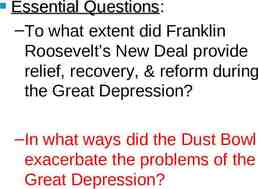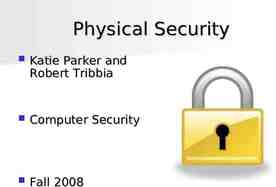Session 3: Text Complexity Audience: K – 5 Teachers
18 Slides3.70 MB
Session 3: Text Complexity Audience: K – 5 Teachers
Become familiar with the CCSS criteria for text complexity. Become familiar with the “staircase” of text complexity from grade to grade. Explore some strategies and resources for making the grade-appropriate texts accessible to all students. In the K-12 Teachers: Building Comprehension in the Common Core In Chapter 3: Instruction of the Oregon K-12 Literacy Framework 2
The ACT report, Reading Between the Lines, shows that the key predictor for career and college readiness is not just success with individual reading skills but with the level of complexity of the text. The CCSS “staircase” of text complexity begins at kindergarten. 3
Reported decline in high-school level text More students are on track to being ready for college-level reading in 8th and 10th grade than are actually ready by the time they reach 12th grade. (ACT) Increased text difficulty of college/career texts College professors assign more periodical reading than high school teachers. The level of difficulty of scientific journals and magazines has increased. Decline in school text complexity overall K-12 reading texts have actually trended downward in difficulty in the last half century. 4
Complex text holds the vocabulary-, language-, knowledge-, and thinking-building potential of deep comprehension. If students have not developed the skills, concentration, and perseverance to read challenging texts with understanding, they will read less in general. Limited access to complex texts is an equity issue. The consequences are disproportionately harsh for students in poverty or high-mobility situations. 5
6
Levels of meaning/purpose Text structure Language conventionality and clarity Knowledge Demands: Life Experiences Knowledge Demands: Cultural/Literary Knowledge Knowledge Demands: Content/Discipline Knowledge 7
Purpose and main idea Explicit? Multiple? Structure Organization of the whole? Sections? Paragraphs? Sentence structures? Language Familiar, contemporary? Specialized, arcane? Perspective Familiar? Unusual? Multiple? Background or content knowledge required? More text exemplars in Appendix B, Common Core State Standards for ELA & Literacy. 8
Main idea explicitly stated in first two lines. Structure is consistent First line names beneficial insect and says what it does. Second line(s) explains how this helps the garden. Simple sentences & words Vocabulary “rich” -- ? Content Knowledge How can dirt be “rich and healthy”? How do earthworms make soil rich and healthy? What is a praying mantis? S-V & S-V-O “bugs,” “plants” “garden” 9
“MetaMetrics has realigned its Lexile ranges to match the Standards’ text complexity grade bands and has adjusted upward its trajectory of reading comprehension development through the grades to indicate that all students should be reading at the college and career readiness level by no later than the end of high school.” 10
Old Lexile Ranges Realigned Lexile Ranges 11
Cognitive capabilities Attention, memory, critical analytic abilities Motivation and engagement with task Purpose, interest in the content, confidence as a reader Prior knowledge and/or experience Vocabulary, domain and topic, comprehension strategies, linguistic structures, discourse styles, genres Reader’s purpose and intended outcome Type of reading Skimming to get the gist, studying for retention -- More in Appendix A, Common Core State Standards in ELA & Literacy 12
Non-text sources For example, multi-media and class discussions, build the foundation of vocabulary, language and content knowledge Easier, supplemental texts can provide instructional-level reading material Instructional scaffolding activities For example, teacher-facilitated read-alouds, discussion of text excerpts, partner reading, peer coaching Explicit instruction on vocabulary, text structure, & comprehension strategies Multiple texts – More at K-12 Teachers: Building Comprehension in the Common Core 13
With partners, brainstorm scaffolding activities you might use with the text(s) you analyzed in the previous activity. Rich! 14
Grade-appropriate materials for exposure to structures, content, vocabulary; Instructional-level materials that allow them to progress; Easy materials that allow them to practice. If familiar/interesting, material can be more challenging. If unfamiliar/uninteresting, material may need to be less challenging. – More at K-12 Teachers: Building Comprehension in the Common Core 15
Greater scaffolding is provided at the beginning of tasks. Scaffolding supports an increasing level of complexity. Include a plan for removing the scaffolding. 16
What are the three factors used to assess text complexity in the Common Core State Standards? Why have the Lexile ranges for grade bands been changed? Why is it important that ALL students engage with the central, grade-appropriate complex text? What are some scaffolding strategies or activities that can make complex text more accessible to students with below-grade reading skills? 17
In grade level teams, create lesson(s) that include one or more text exemplars from CCSS Appendix B. Include support/scaffolding strategies from K-12 Teachers: Building Comprehension in the Common Core. Include comprehension strategies (page I-22 to I-26) and one or more of the nine effective teacher delivery features (pages I-42 to I-53) from the Oregon K-12 Literacy Framework. In cross-grade level teams, brainstorm themes or topics around which to select texts so that students continue to build in-depth knowledge across grades. 18























